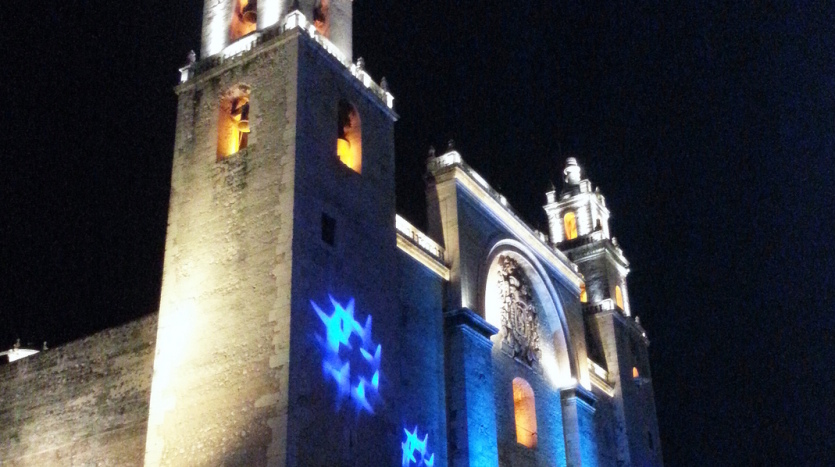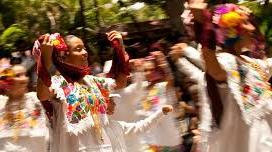The Christmas and New Year holidays in Mexico are not celebrated only on the two specific days. The celebration actually begins several weeks prior to this and ends several days later. This time of year is also known for many customs and special foods.
Local Customs:
The three weeks leading up to Christmas are filled with two musical traditions: ramas and villancicos. La rama is characterized by groups of toddler to teenage kids (carolers) going door to door singing Christmas type carols in hope of getting tipped with coins at the end of their performance. Villancicos are also based upon the caroling tradition but with original and changing lyrics which are written to be more humorous.
The feast of the Virgin of Guadalupe occurs on December 12th.
Next, are the wonderful Christmas parties which are known in Mexico as posadas. Posada literally means “Inn”, and the tradition in Catholic Mexico is derived from when Mary and Joseph searched for a refuge to give birth to Jesus. Peoples’ homes are opened to family and friends to celebrate, socialize, and enjoy the season. Christmas posada parties are often so numerous at this time of year, that one can become very overwhelmed with all of the obligations made to family and friends to attend, and the late nights which inevitably go hand in hand with them.
It may be Christmas, but this is also Mexico, so expect piñatas and fireworks to accompany any Christmas posada or celebration here. The fireworks are said to frighten away the evil spirits.
Just like in the US and Canada, Mexicans put up Christmas trees (natural or fake) and decorate their homes at this time of year with lights, Santa, candy canes, and every other traditional Christmas icon which you may be used to seeing.
As the minutes count down towards midnight on New Year’s Eve, 12 grapes, representing the coming twelve months, are consumed while making wishes for the next year with each one. At midnight people open their doors and use a broom to symbolically sweep out the previous year.
Also on New Year’s Eve, women are known for wearing different colors of underwear based upon what they are seeking in the New Year: red for passion, pink for health, white for love or friendship, green for hope, and yellow for prosperity.
Día de Reyes (literally “Kings’ Day”) on January 6th is the traditional day when the children of Mexico, Spain, and Central and South America receive their Christmas gifts. In Mexico, before going to bed, some children leave their shoes outside filled with a note and hay for the steeds of the Wise Men. On this day, whoever finds the baby Jesus which is hidden in the Rosca de Reyes is blessed, but must also host and provide the tamales for the following year’s celebration.
Traditional Foods:
Bacalao- (Northern and Central Mexico) a dried, salted codfish which is originally from Spain. The dish has evolved over the years to be cooked with onions, garlic, tomatoes, olives, parsley, and other spices.
Romeritos- (Northern and Central Mexico) a wild, leafy green resembling rosemary. It is boiled and usually served with dried shrimp and potato patties in a mole sauce.
Tamales- (All of Mexico) a corn-based masa which originated with the Maya and is steamed or boiled in a leaf wrapper (corn or banana usually). They can be plain or filled with meat, cheese, vegetables, fruit, or other ingredients, along with spices.
Turkey- (Mexico as a Whole) Turkey at Christmas is the most universal of holiday dishes and this is no different here in Mexico. Just as in the States, the bird is often stuffed with breading, ground beef or pork, or other ingredients and spices.
Buñuelos- (mostly Northern Mexico) a lightly fried, dough ball dessert which existed as far back as the Roman Empire and most likely eaten by Jesus. They are served sprinkled with sugar or filled with fruit.
Rosca de Reyes- (All of Mexico and literally “Three King’s Bread”) a braided, wreath-shaped sweet bread which contains a small figurine of baby Jesus inside and is served on January 6th which is Dia de Reyes or “Kings’ Day”.
Ponche con piquete- (All of Mexico) a hot cider usually containing alcohol.
Overall, the Christmas holiday season in Mexico is very similar to that anywhere else in the world. The only difference here being both the greater number of festivities and people considered close family and friends. It is a religious time of the year marked by traditional foods and celebrations to be shared with loved ones, extended family, and friends. Enjoy!



